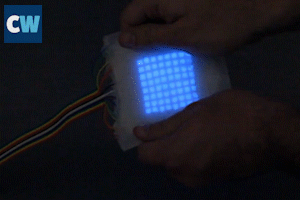
Jon Cartwright
From Physics World to Chemistry World
Jon Cartwright is a freelance journalist based in Bristol, UK. He specializes in science and has a particular interest in its history, culture and effects on society. His work has appeared in Science, Nature, New Scientist, The Observer, The Daily Telegraph, Prospect, the Times Higher Education, Venue, Sky at Night, Horizon (published on behalf of the EC), Physics World and Chemistry World.
Jon Cartwright graduated with a Masters in Physics from the University of Bristol in 2006. He immediately went to work for the Institute of Physics Publishing, where he wrote for two industry titles before taking a role as a general reporter for the academic magazine Physics World. He went freelance at the start of 2009, and collects some of his work on his website, jcartwright.co.uk.
 Research
ResearchChernobyl disaster mystery solved
A nuclear explosion – not high pressure steam – started the chain reaction of events that destroyed the reactor
 Feature
FeatureIn or out?
On 23 June, UK citizens will be asked whether they want to remain in the EU. What will the consequences be for science? Jon Cartwright finds out
 Research
ResearchTouch sensitive super stretchy skin shows promise for soft robots
Material can stretch to nearly five times its original length and emit different colours
 Research
Research‘Chameleon’ camouflages itself with plasmonic skin
Nano-structured display changes colour in response to electric field
 Research
ResearchGraphene sieves deuterium from hydrogen
Atom-thick materials could make heavy water production 10 times cheaper than conventional technologies
 News
NewsPerovskite boosts silicon solar cell efficiency
Silicon industry will be ‘beating a path to the door’ of inventors, says scientist
 Research
ResearchGraphene band gap heralds new electronics
Higher quality material produces largest band gap ever recorded
 Research
ResearchElectrostatic net kills resistant mosquitoes
A new coating for insecticide-treated mosquito nets could help tackle malaria and dengue fever
 Research
ResearchAFM pictures show bond polarity
Atomic force microscopy technique reveals charge distribution within chemical bonds
 Research
ResearchTouch lights up supercooled material
Weight of a single cell is enough to induce crystallisation in amorphous organic material
- Research
E-paper display draws on child’s toy
For interactivity, scientists take a leaf out of the Magna Doodle book
 Research
ResearchMystery of why ‘structural red’ colours are not found in nature is solved
Discovery may help scientists to produce e-readers with colour screens
 Research
ResearchFlexible solar cell woven into fabric
Solar cell textiles could one day power wearable electronics
- Research
‘Solar’ jet fuel made out of thin air
European scientists produce kerosene from water and carbon dioxide using concentrated sunlight
- Research
Computer memory made from sugar cube
Edible, biodegradable metal–organic framework can form resistive random-access memory
- Research
Vibrations couple light to graphene
Independent teams realise that graphene rippled by sound waves is better at converting light to surface plasmons
- Research
Micromotors clean polluted water
Researchers invent self-propelled devices that degrade organic pollutants
- Research
Quasicrystals discovered in oxides
Discovery in perovskite suggests many more quasicrystals are just waiting to be found
- Research
Graphene targets water treatment and carbon capture
Researchers demonstrate membranes that filter gases, including carbon dioxide
- Research
Maxwell’s demon gets scribbling
Demon can transfer energy from cold to hot reservoir if it simultaneously generates information, researchers claim